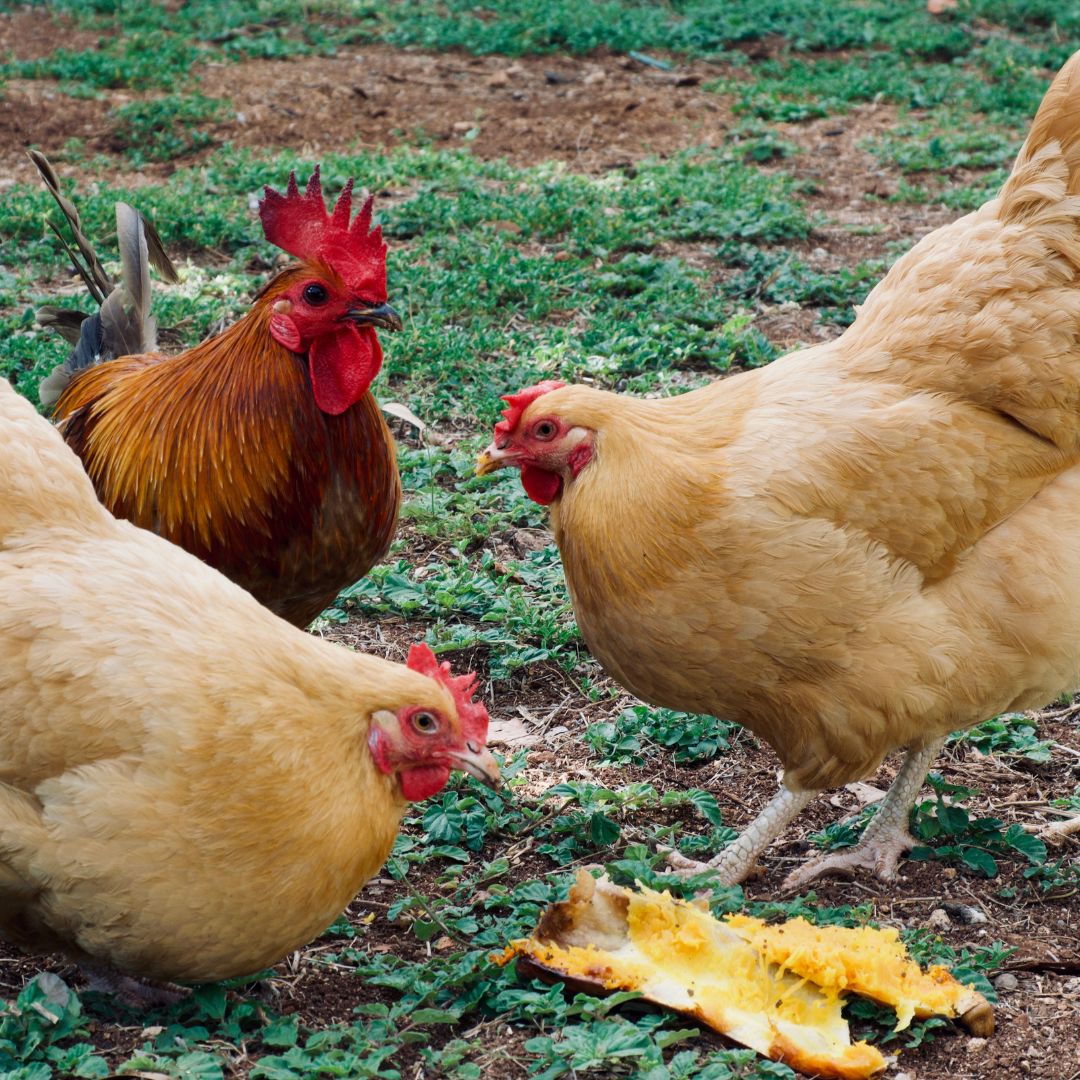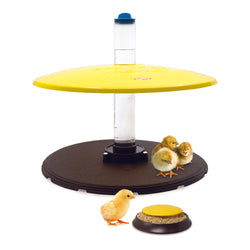What treats taste best to chickens?
Back to blog
Chickens LOVE treats, and they have their own individual tastes and preferences, of course. But we hate to break it to you: they have almost no taste buds, so their preferences are probably not based primarily on fine taste nuances. Humans have around 10,000 taste buds, while chickens have a maximum of only around 350 taste buds. They don't have any receptors for capsaicin (spiciness), and have a good tolerance for sour, although they're attracted to neither bitter nor sweet nor salty. And in fact, the taste buds of a chicken are located so far back on the tongue that they have more or less swallowed something before they have any idea about what it tastes like. The bottom line is that they just don't rely primarily on taste to decide what food to eat and what to reject. So... why do they adore some and reject other foods, when they have so little sense of taste?

I BEG your pardon!
There isn't a simple answer, unfortunately. But we do know that birds in general are very visually oriented. The color red appeals to them for instance---this is why using a red heat lamp in a brooder can reduce pecking. (Under a red light, anything colored red looks more or less grey.) Also, the size and shape of things may draw them to peck and taste; for instance, baby chicks will peck at spots on their brooder walls, or even freckles on your arm. They try out every little spot, dust bunny and mote of pollen until they learn what is food and what is not!
Motion may attract their preference, too. They seem to prefer live mealworms over the freeze dried variety, for example. And that makes sense: predatory birds like raptors can key in on motion, even from a great distance. Chickens, of course, are not carnivores... but they are omnivores, eating bugs and even small rodents, reptiles and amphibians, in addition to vegetable matter like seeds, grasses, fruits and so on.
Smell also seems to be a factor, despite the fact that we think of smell and taste as being somewhat entwined. You'd think that if birds have little sense of taste, they'd also have little sense of smell. However, that seems not to be the case. Despite having little actual sense of taste, birds' sense of smell is reasonably developed.
Personally, I wonder if texture affects their preferences. In Asia, for instance, there are certain textures that have a culinary appeal for people. Culturally, these textures are not something Westerners always enjoy. Take birds' nest soup, for example, a delicacy made from actual birds' nests---real nests that are made out of real (ulp) hardened, dried bird saliva. The taste of the nest is faintly salty, nothing spectacular. It's the broth that gives the soup most of its flavor. But the texture of the nest itself is akin to softened cartilage. This is just not a texture westerners tend to like or seek out. But after having attended a Chinese wedding and having experienced the salty, mucilaginous wonder of a tasty broth... served over a tasteless something with a texture somewhere between gristle and snot--and having seen how many people genuinely enjoyed it, I have to wonder if texture is something that affects how a bird experiences food. That said, birds don't, of course, hold food in their mouths very long and experience texture that way. Having no teeth, they just don't chew food so far up the digestive tract like we do. But perhaps there is some sensation of texture in a bird's gizzard? There have been no studies on this, insofar as we can tell. But if there are any budding scientists reading this page, perhaps we'll inspire them to do a study.
What we do know is that diets that are very high in fiber have an effect on transit time and on feed efficiency in birds that would otherwise have especially efficient digestion. But we don't know if there's much preference on the birds' part. Some studies have shown that birds prefer corn over, say, rye or barley... and we know both of those have a much higher fiber content than corn. But that just shows correlation, not causation. Does their preference for corn have to do with smell? Calorie content? Texture? Fiber content?
We just don't know for sure. And until we get an army of scientists to translate or musings into studies, we probably won't.
What we can say is that it probably isn't primarily based on taste.

I BEG your pardon!
There isn't a simple answer, unfortunately. But we do know that birds in general are very visually oriented. The color red appeals to them for instance---this is why using a red heat lamp in a brooder can reduce pecking. (Under a red light, anything colored red looks more or less grey.) Also, the size and shape of things may draw them to peck and taste; for instance, baby chicks will peck at spots on their brooder walls, or even freckles on your arm. They try out every little spot, dust bunny and mote of pollen until they learn what is food and what is not!
Motion may attract their preference, too. They seem to prefer live mealworms over the freeze dried variety, for example. And that makes sense: predatory birds like raptors can key in on motion, even from a great distance. Chickens, of course, are not carnivores... but they are omnivores, eating bugs and even small rodents, reptiles and amphibians, in addition to vegetable matter like seeds, grasses, fruits and so on.
Smell also seems to be a factor, despite the fact that we think of smell and taste as being somewhat entwined. You'd think that if birds have little sense of taste, they'd also have little sense of smell. However, that seems not to be the case. Despite having little actual sense of taste, birds' sense of smell is reasonably developed.
Personally, I wonder if texture affects their preferences. In Asia, for instance, there are certain textures that have a culinary appeal for people. Culturally, these textures are not something Westerners always enjoy. Take birds' nest soup, for example, a delicacy made from actual birds' nests---real nests that are made out of real (ulp) hardened, dried bird saliva. The taste of the nest is faintly salty, nothing spectacular. It's the broth that gives the soup most of its flavor. But the texture of the nest itself is akin to softened cartilage. This is just not a texture westerners tend to like or seek out. But after having attended a Chinese wedding and having experienced the salty, mucilaginous wonder of a tasty broth... served over a tasteless something with a texture somewhere between gristle and snot--and having seen how many people genuinely enjoyed it, I have to wonder if texture is something that affects how a bird experiences food. That said, birds don't, of course, hold food in their mouths very long and experience texture that way. Having no teeth, they just don't chew food so far up the digestive tract like we do. But perhaps there is some sensation of texture in a bird's gizzard? There have been no studies on this, insofar as we can tell. But if there are any budding scientists reading this page, perhaps we'll inspire them to do a study.
What we do know is that diets that are very high in fiber have an effect on transit time and on feed efficiency in birds that would otherwise have especially efficient digestion. But we don't know if there's much preference on the birds' part. Some studies have shown that birds prefer corn over, say, rye or barley... and we know both of those have a much higher fiber content than corn. But that just shows correlation, not causation. Does their preference for corn have to do with smell? Calorie content? Texture? Fiber content?
We just don't know for sure. And until we get an army of scientists to translate or musings into studies, we probably won't.
What we can say is that it probably isn't primarily based on taste.



